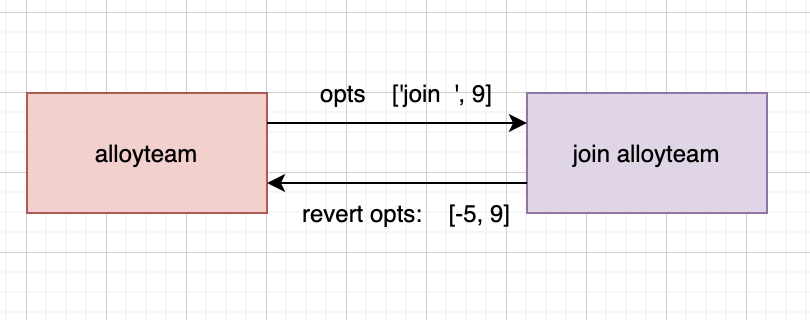Blog
 Blog copied to clipboard
Blog copied to clipboard
协同编辑 - OT算法
对于在线文档的难点,大部分同学的第一反应都是协同编辑,如何解决多人协作的冲突的问题。
关于ot协作的介绍,这篇文章已经有了一定的初步介绍,本文在这篇文章之上,精读一下ot.js这个库,一起来学习下如何实现一个ot.js。
ot.js中核心的文件是text-operation.js文件,本文精读也将围绕它展开。
对于协同编辑场景,都要解决哪些问题呢?
- 支持将多次操作合并成一次
- 对不同用户的多次操作进行合并,并返回相对应的opts,使不同用户的界面展示保持一致。
- 对于用户的操作支持回退
要实现上面这3个需求,我们先来看看如何设计ot算法中的数据结构。
function TextOperation () {
if (!this || this.constructor !== TextOperation) {
// => function was called without 'new'
return new TextOperation();
}
// When an operation is applied to an input string, you can think of this as
// if an imaginary cursor runs over the entire string and skips over some
// parts, deletes some parts and inserts characters at some positions. These
// actions (skip/delete/insert) are stored as an array in the "ops" property.
this.ops = [];
// An operation's baseLength is the length of every string the operation
// can be applied to.
this.baseLength = 0;
// The targetLength is the length of every string that results from applying
// the operation on a valid input string.
this.targetLength = 0;
}
可以看到我们对于字符串的操作都保存在了ops数组里, 一共会有3种类型的操作,分别是保留,删除,和插入. 数据结构中还记录了字符串初始化的长度和操作之后的目标长度, 用来做一些opts的判断(eg:equals方法)。
1. 基础方法apply
TextOperation.apply = function (operation, str) {
// var operation = this;
if (str.length !== operation.baseLength) {
throw new Error("The operation's base length must be equal to the string's length.");
}
var newStr = [], j = 0;
var strIndex = 0;
var ops = operation.ops;
for (var i = 0, l = ops.length; i < l; i++) {
var op = ops[i];
if (isRetain(op)) {
if (strIndex + op > str.length) {
throw new Error("Operation can't retain more characters than are left in the string.");
}
// Copy skipped part of the old string.
newStr[j++] = str.slice(strIndex, strIndex + op);
strIndex += op;
} else if (isInsert(op)) {
// Insert string.
newStr[j++] = op;
} else { // delete op
strIndex -= op;
}
console.log(newStr, strIndex)
}
if (strIndex !== str.length) {
throw new Error("The operation didn't operate on the whole string.");
}
return newStr.join('');
}
tips:因为delete操作,存的值是负数,所以这里是 strIndex -= op。
2. 基础方法invert
TextOperation.prototype.invert = function (str) {
var strIndex = 0;
var inverse = new TextOperation();
var ops = this.ops;
for (var i = 0, l = ops.length; i < l; i++) {
var op = ops[i];
if (isRetain(op)) {
inverse.retain(op);
strIndex += op;
} else if (isInsert(op)) {
inverse['delete'](op.length);
} else { // delete op
inverse.insert(str.slice(strIndex, strIndex - op));
strIndex -= op;
}
}
return inverse;
};
我们针对原有opts数组生成保存回退操作的相对应的opts。

3. 核心方法compose解析
这个方法是用来将两个opts数组合并成一个,
也就是s.apply(a, b) = s.apply(compose(a, b));
因为源代码比较长,这里我们就只解析下compose的思路。
要将两个opts合并,那么我们就维护两个指针,移动对应的两个opts数组:
(以下简写a=opts1[i]; b = opts2[j])
在合并opts的过程中,我们始终要保证a和b是对当前字符串同一位置所进行的操作。

- 1). a的删除操作是第一优先级,因为b的操作(保留,删除,添加)是基于a的操作之后进行的动作,因此需要先执行a的删除操作。
- 2). b的插入操作是第二优先级,在相同位置下,b的添加操作,从结果上看,都是先于a的保留或者添加的。
- 3). 如果a,b都是保留操作,那我们就保留两个中的公共长度
- 4). 如果a是插入,b是删除,那么我们就将两个操作的相同长度进行合并,保留操作长度剩下的部分,继续遍历
- 5). 如果a是插入,b是保留,那么我们就插入两个操作的公共长度,保留操作长度更长的部分,继续遍历
- 6). 如果a是保留,b是删除,那么我们就删除两个操作的公共长度,保留操作长度更长的剩余部分,继续遍历
4. 核心方法transform解析
和compose方法类似,只是transform是为了将两个opts生成相对应互补的opts,来解决保证两个用户的界面展示一致,解决问题二。也就是 `s.apply(compose(a, b')) = s.apply(compose(b, a')).

- 1). 如果a是插入操作,那么相对应的a'也应该插入相同的元素, b'就应该保留a'的长度(b操作为插入时一样)。
- 2). 如果a和b都是保留操作,那么a'和b'都应该保留min(a, b)的长度
- 3). 如果a和b都是删除操作,那么我们只需要保留两边删除元素不一致的地方即可,然后进入下面的判断
- 4). 如果a是删除,b是保留,那么a'需要添加min(a, b)的长度,进入下一轮遍历
- 5). 如果a是保留,b是删除,和操作5一样。
VG